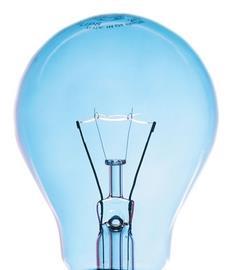I was surprised to see in your online poll on the incandescent lamp that my fellow professionals give serious consideration to banning them.
I would like to draw attention to the following aspects of the situation:
• With reference to the heat replacement effect, recent research for DEFRA shows that 60% of the energy used for lighting ends up as useful heat in the house and that the net delivered energy saving is only 14% of the gross saving.
• The lumen output depreciation through the long life of the CFL means that a fair comparison is not usually made between the two types.
• The power factors of many CFLs that I tested lay in the region of 0.5, indeed one was as low as 0.4. So the actual current required to operate these lamps can be about twice the nominal current that is indicated by the wattage rating. The consumer does not pay for this current as his meter assumes a unity power factor, but the power station is required to generate it.
• When I tested some CFLs a few years ago I found that they produced very high levels of harmonic currents which may not be a problem when the usage is small, but could cause difficulties for the supply industry if the amount of usage grew significantly.
• The increasing use of dimmers for incandescents does have an energy reduction spin-off and also prolongs lamp life. CFLs that are currently available do not have this facility, but instead are inclined to suffer from the “slow warm-up syndrome” especially in cold locations.
• The fact that Sainsbury’s can sell one of the best GLS lamps on the market (see Which? March 2007) for the princely sum of 8p must give some idea of how little energy goes into its production.
• Light quality is obviously a big factor, but the colour-rendering properties of sources some way off the black body locus are often considered to fall short of those exhibited by incandescent sources. The lack of sparkle and focussing ability are also shortcomings of CFLs.
• Most houses have locations where lighting is only required for a short time, such as cloakrooms, attics and exteriors. The reduced life of the CFLs caused by frequent switching renders them less appropriate here.
• Luminaires, complete with control gear for miniature fluorescent lamps, fall into a different category, but still suffer from some of the shortcomings mentioned above.
The matter requires further investigation and informed discussion before the professional integrity of the lighting industry is swept aside by an illogical tide of superficial political correctness.
Mark Wood-Robinson CEng, FCIBSE FSLL FILE
Source
�ڶ����� Sustainable Design


















No comments yet